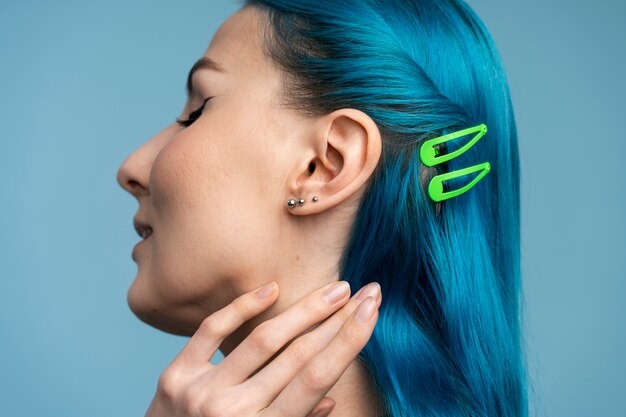Ear piercings are more than just a fashion statement; they’re a form of self-expression that has evolved over generations. In the United States, the diversity of ear piercing styles and placements offers individuals a myriad of options to adorn their ears uniquely. For those seeking inspiration or information on the various ear piercing styles and placements, this guide serves as a comprehensive overview.

Understanding Ear Piercing Styles
1) Lobe Piercings
- Standard Lobe Piercing: Positioned at the lower part of the earlobe, this is the most common and traditional piercing style.
- Multiple Lobe Piercings: A trend gaining popularity involves having multiple piercings on the earlobe, either in a linear or curated pattern.
2) Cartilage Piercings
- Helix Piercing: Placed on the upper ear cartilage, the helix piercing offers versatility with single or multiple piercings along the rim.
- Forward Helix Piercing: Positioned at the front of the ear’s upper cartilage, this style provides a unique and visible placement.
3) Inner Ear Piercings
- Conch Piercing: Placed in the center of the ear’s cartilage, the conch piercing can be done on the inner or outer conch area.
- Tragus Piercing: Located on the small piece of cartilage protruding over the ear canal, the tragus piercing has gained popularity for its subtle yet stylish appearance.
4) Specialty Piercings
- Daith Piercing: Positioned in the innermost cartilage fold, this piercing has gained attention for its potential to alleviate migraine symptoms, although scientific evidence remains inconclusive.
- Rook Piercing: Placed at the upper inner cartilage fold, the rook piercing adds a unique touch to ear adornment.
Factors to Consider Before Getting an Ear Piercing
1) Pain and Healing
- Different areas of the ear may vary in pain perception during the piercing process.
- Healing times can differ based on the location and individual body response.
2) Jewelry Options
- Consider the variety of jewelry available for different piercing styles, such as studs, hoops, or barbells.
- Material choice (e.g., surgical steel, gold, titanium) is essential to avoid allergic reactions or infections.
3) Professional Piercing Studios
- Research reputable piercing studios in your area to ensure a safe and hygienic experience.
- Seek professional advice on suitable placements and aftercare practices.
Aftercare for Ear Piercings
1) Cleaning Routine
- Follow the recommended cleaning regimen provided by your piercer using saline solution or mild soap.
- Avoid touching the pierced area with unwashed hands.
2) Avoiding Irritants
- Keep hair products, makeup, and harsh chemicals away from the piercing to prevent irritation.
- Refrain from changing or removing the jewelry prematurely, as it can hinder the healing process.
Conclusion
Ear piercings offer a spectrum of possibilities for personal expression, allowing individuals to curate their unique style statements. Before getting an ear piercing, thorough research into styles, placements, aftercare, and professional studios is crucial to ensure a safe and satisfying experience.
For those considering ear piercings, seeking reputable piercing studios in your vicinity is essential. Online searches using keywords like ear piercings near me can assist in finding professional establishments that cater to various piercing styles and offer expert guidance.
Ultimately, ear piercings are not just about adorning the ears; they represent individuality, creativity, and the celebration of personal aesthetics.
Sources:
- American Academy of Dermatology Association – Ear Piercing: What You Should Know
- National Institute of Health – Body Piercing: Styles, Risks, and Health Effects
- Dermatology Times – Understanding Ear Piercing Placements
Note: This guide provides informational content and does not constitute medical advice. Consult a professional piercer for personalized guidance and care instructions.
